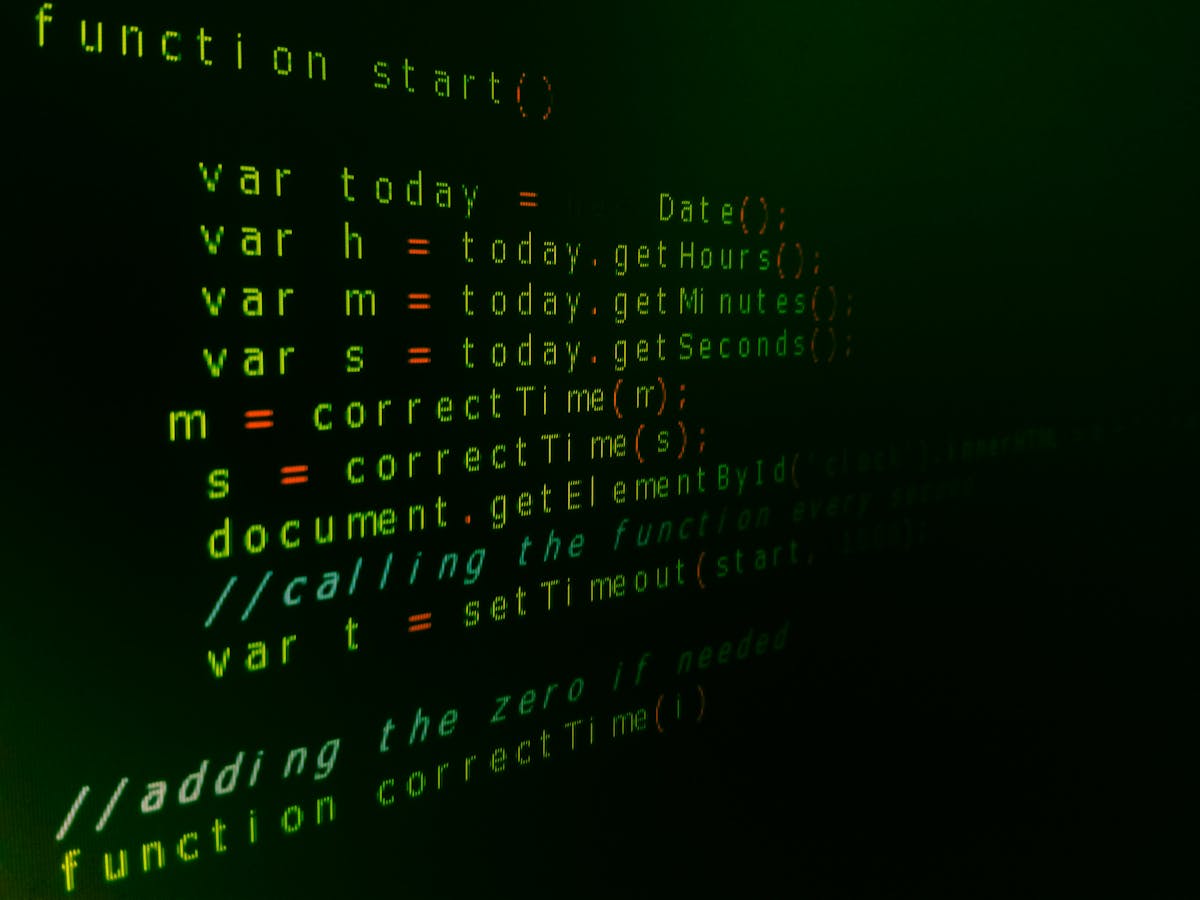All Concerning Full-Stack Advancement: Exploring Its Duty in Effective Software Design
Full-stack development has emerged as a keystone of contemporary software design. By incorporating front-end and back-end innovations, it creates cohesive internet applications. This strategy not just boosts interface however also enhances server-side performance. As the need for adaptable developers rises, understanding the subtleties of full-stack development ends up being vital. Exactly what does this entail, and what ramifications does it hold for the future of software program engineering?
Comprehending Full-Stack Growth
Full-stack development incorporates the full spectrum of web growth, integrating both front-end and back-end modern technologies. This multidisciplinary method allows designers to create fully useful internet applications, handling every little thing from customer interface design to server monitoring. Full-stack developers have a considerable capability, enabling them to navigate different layers of an application, including databases, server-side logic, and client-side interactions.Understanding the full-stack growth procedure entails identifying the relevance of individual experience and application efficiency. Developers need to consider exactly how these components interact, guaranteeing a seamless experience for customers. Furthermore, full-stack development cultivates collaboration amongst groups, as developers can communicate properly throughout techniques. niels denekamp aether. This convenience not only streamlines workflows however additionally boosts problem-solving abilities. In a progressively electronic world, the need for full-stack designers continues to grow, highlighting their crucial role in the software application engineering landscape
Trick Technologies in Full-Stack Growth
The landscape of full-stack growth is specified by a variety of key technologies that encourage designers to construct robust web applications. On the front end, popular frameworks like React, Angular, and Vue.js assist in the development of dynamic user interfaces. These devices allow designers to develop responsive styles and enhance individual experiences.On the backside, Node.js, Django, and Ruby on Rails are commonly utilized for server-side growth, enabling reliable handling of database communications and server reasoning. Databases such as MongoDB and PostgreSQL are essential for information storage and retrieval.APIs are important in attaching the front end and back end, allowing seamless data exchange. In addition, variation control systems like Git are crucial for handling code changes and collaboration amongst development teams. Collectively, these modern technologies create a substantial toolkit that makes it possible for full-stack developers to deliver top notch applications successfully.
Benefits of Being a Full-Stack Developer
An occupation as a full-stack programmer uses various benefits that attract both beginners and skilled specialists. One considerable benefit is the versatility to deal with both front-end and back-end innovations, permitting programmers to develop comprehensive options. This dual ability enhances analytic capabilities, enabling them to attend to issues throughout the whole pile efficiently.Additionally, full-stack programmers often take pleasure in higher task possibilities, as their diverse abilities make them useful assets to firms looking for to improve development processes. The capability to recognize and handle entire jobs cultivates boosted partnership within teams, resulting in an extra cohesive workflow.Moreover, full-stack programmers tend to command higher wages as a result of their extensive know-how. Constant knowing is another perk, as they frequently engage with different technologies and structures, keeping their abilities appropriate. Eventually, the function of a full-stack programmer is fulfilling and vibrant, offering a fulfilling career path for those who accept it.
The Full-Stack Growth Refine
While navigating with the full-stack growth process, programmers involve in a series of organized phases that ensure the production of robust applications. Demands gathering is crucial, as it lays the structure for recognizing customer needs and project goals. This is followed deliberately the application architecture, where the total structure, technologies, and frameworks are picked to satisfy the requirements.Next, programmers shift to the front-end and back-end advancement stages, where they create individual interfaces and server-side logic, specifically. Evaluating is an integral phase that verifies safety and security, functionality, and performance, attending to possible bugs and problems prior to deployment.Finally, the deployment phase entails releasing the application and monitoring its performance in a real-time setting. Throughout this comments, model and process loopholes are essential, enabling constant renovation and adjustment to transforming requirements. This organized method assists in the growth of effective, scalable, and maintainable applications.

Cooperation In Between Front-End and Back-End Teams
Effective collaboration between front-end and back-end teams is essential for effective full-stack growth. Strong interaction, using shared devices and modern technologies, and agile collaboration methods can substantially improve process and job outcomes - niels denekamp. By fostering a natural working connection, groups can better straighten their initiatives and deliver a seamless customer experience
Value of Communication
Successful cooperation in between front-end and back-end teams rests on consistent and clear communication. This communication is necessary for aligning project timelines, expectations, and goals. When front-end programmers recognize the back-end architecture and the other way around, they can produce much more functional and cohesive applications. Normal conferences and updates facilitate the exchange of ideas, allowing groups to resolve possible problems early in the development process. Furthermore, effective interaction cultivates a This Site collective atmosphere, encouraging group members to share insights and comments, inevitably bring about innovative remedies. By focusing on communication, groups can reduce misunderstandings, enhance process, and boost general productivity. As a result, the duty of communication in full-stack development can not be overemphasized; it serves as the backbone of effective software program engineering jobs.
Shared Tools and Technologies
Clear communication sets the stage for utilizing common tools and modern technologies effectively in full-stack advancement. This cooperation between front-end and back-end teams depends upon the adoption of integrated devices that enhance operations and boost efficiency. Variation control systems, such as Git, facilitate smooth cooperation by enabling designers to track modifications and merge code effectively. Furthermore, APIs work as a crucial bridge, making it possible for front-end and back-end elements to communicate effectively. Furthermore, shared development atmospheres, like Docker, foster uniformity, permitting groups to function in a consistent arrangement. By leveraging these shared devices, teams can decrease misunderstandings and accelerate the development procedure, eventually causing more cohesive software solutions that meet job requirements and customer expectations.
Agile Collaboration Practices

Usual Difficulties in Full-Stack Development
What barriers do full-stack designers run into as they browse the intricacies of both front-end and back-end modern technologies? One prominent challenge is the quick advancement of structures and tools, which calls for constant knowing and adjustment. Programmers must remain upgraded with both front-end libraries, such as React or Angular, and back-end technologies like Node.js or Django, which can bring about skill voids or expertise overload.Additionally, full-stack programmers frequently have problem with workload administration as a result of the substantial variety of responsibilities. Stabilizing tasks between interface style, server-side logic, and database administration can lead to time constraints and project delays.Collaboration and interaction within groups also existing difficulties, as full-stack designers have to link the gap in between front-end and back-end groups, making sure placement on task objectives. Finally, debugging across numerous layers of the pile can make complex problem resolution, taking in valuable time and sources.
The Future of Full-Stack Growth
Advancement in modern technology assures to form the future of full-stack advancement considerably. As companies increasingly adopt cloud computing and microservices styles, the demand for full-stack developers that can perfectly integrate front-end and back-end modern technologies is expected to expand. The rise of man-made knowledge and device understanding will likely influence growth practices, allowing much more effective coding and automated testing processes.Moreover, the introduction of no-code and low-code systems may redefine the function of full-stack programmers, enabling them to concentrate on higher-level design and design while simplifying routine jobs click this site (niels denekamp linkmedia). This shift can promote collaboration in between technical and non-technical employee, expanding the scope of full-stack development.Additionally, the focus on cybersecurity will certainly result in the integration of protection practices within the full-stack advancement lifecycle. Generally, the future of full-stack growth shows up bright, characterized by continual knowing and adjustment to an ever-changing technical landscape
Frequently Asked Questions
What Educational History Is Preferred for Full-Stack Developers?
The favored educational background for full-stack developers commonly consists of levels in computer system science or software program design. Nonetheless, several effective developers also emerge from coding bootcamps or self-taught experiences, stressing practical skills over formal education and learning.
Exactly How Do Full-Stack Programmers Stay Upgraded With New Technologies?
Full-stack designers remain updated with brand-new modern technologies via continual understanding by means of on the internet training courses, participating in conferences and workshops, involving in neighborhood discussion forums, adhering to market blogs, and try out new tools and structures in personal projects.
Is Full-Stack Development Suitable for Beginners?
Full-stack development can be ideal for newbies, as it offers a considerable understanding of both front-end and back-end technologies. However, the discovering curve might be steep, calling for devotion and consistent method to grasp different skills.
What Prevail Profession Paths for Full-Stack Developers?
Usual occupation courses for full-stack programmers include functions such as software engineer, internet developer, technical lead, and project supervisor. Numerous likewise focus on specific modern technologies or change into relevant fields like product monitoring or customer experience layout.
How Does Full-Stack Advancement Differ From Traditional Software Application Growth?
Full-stack growth incorporates both front-end and back-end jobs, allowing programmers to manage entire projects. On the other hand, conventional software application development commonly includes specific functions, concentrating independently on either client-side or server-side elements of applications. Full-stack advancement includes the total range of internet development, integrating both front-end and back-end technologies. Full-stack programmers possess a wide-ranging skill collection, allowing them to navigate different layers of an application, including databases, server-side logic, and client-side interactions.Understanding the full-stack growth process involves recognizing the importance of individual experience and application performance. In addition, full-stack advancement promotes collaboration among groups, as programmers can interact successfully across techniques. The landscape of full-stack growth is defined by a variety of vital modern technologies that equip developers to build robust internet applications. While navigating with the full-stack development process, designers engage in a collection of organized stages that guarantee the creation of robust applications.
Comments on “Why Auto Coding is Indispensable in Full-Stack Dev: A Guide by niels denekamp linkmedia”